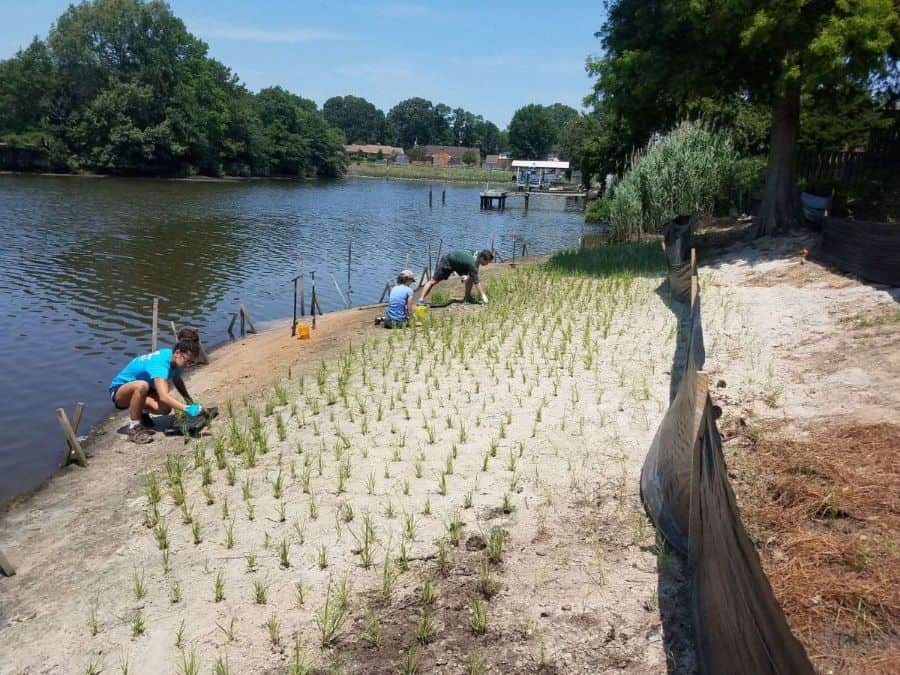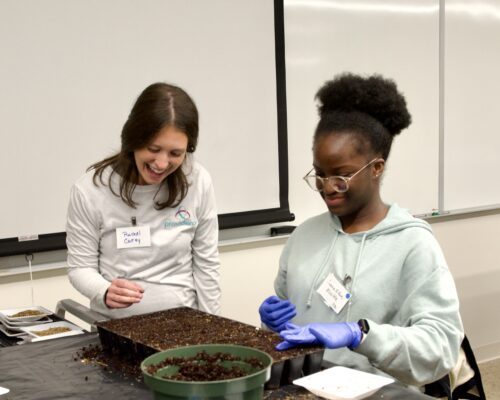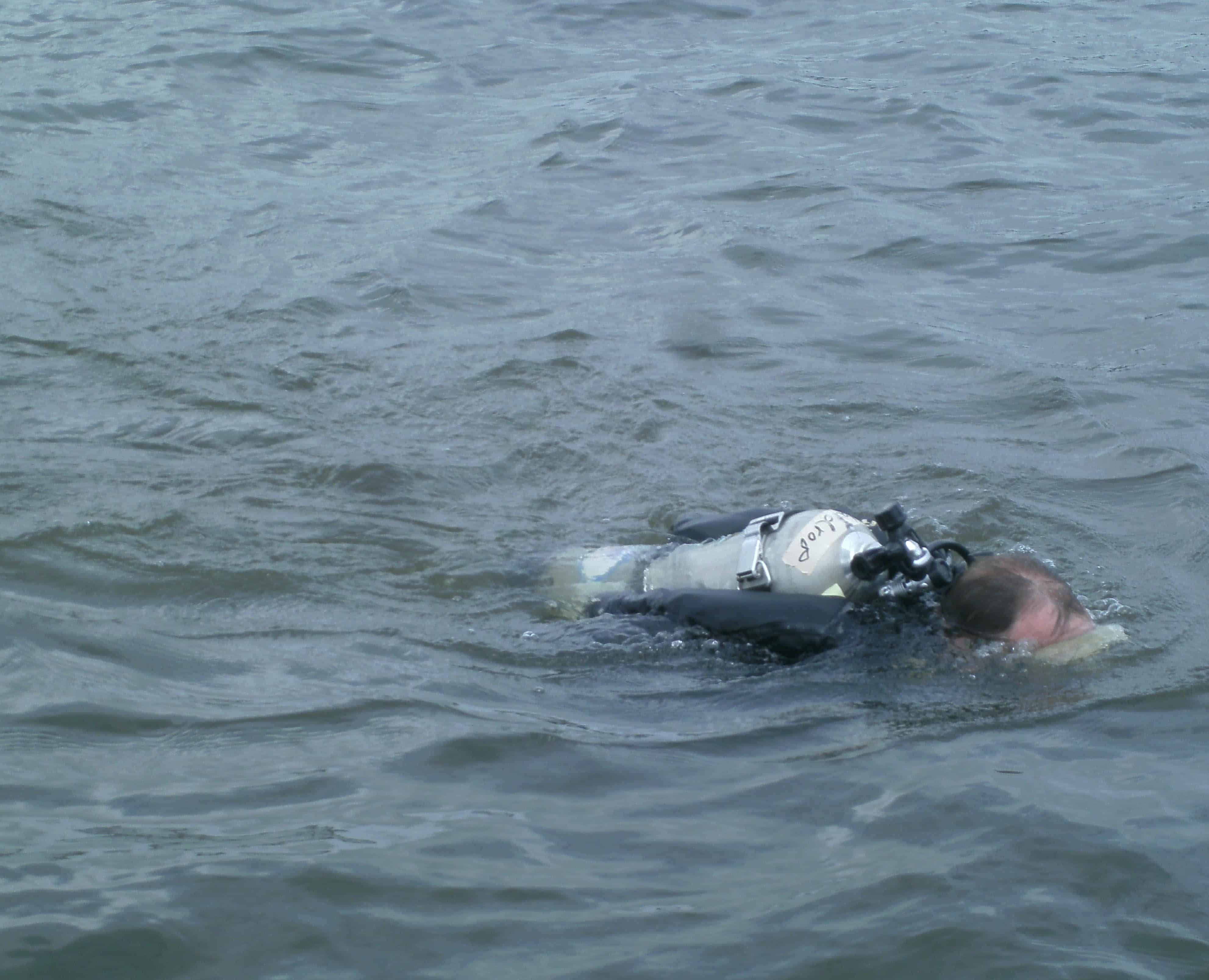The James River is getting a sizable piece of the U.S. Environmental Protection Agency’s (EPA) record-breaking $18 million in Bay grants, which Bay Bulletin told you about earlier this month.
The James River Association (JRA) has been awarded a $1 million grant for water quality improvements along the James River through its Living Shorelines Collaborative, thanks to EPA, the National Fish and Wildlife Federation (NFWF) and the Chesapeake Bay Program.
The grant through NFWF’s Innovative Nutrient and Sediment Reduction program will fund living shoreline training, monitoring, and outreach efforts as well as by investing in the Living Shorelines Collaborative. For example, JRA will partner with the Colonial Soil and Water Conservation District to install 940 linear feet of living shorelines on agricultural land along the James River.
The Living Shorelines Collaborative is a group of regional and state partners working together to restore sections of the tidal James River and its tributaries through construction of living shorelines, a “green infrastructure” technique that stabilizes shorelines using natural materials and native vegetation to build resilience against storms, reduce erosion, and protect marsh areas.
Partners include the Elizabeth River Project, Wetlands Watch, the Virginia Institute of Marine Science, the Colonial Soil & Water Conservation District, the Department of Conservation and Recreation – Shoreline Erosion Advisory Service (DCR-SEAS), the Chesapeake Bay Foundation, and Dialogue + Design.
“Living shorelines are a critical piece of restoring the tidal reaches of the James River watershed,” says Emily Hinson, Lower James Outreach Manager with JRA. “Living shorelines incorporate nature into shoreline protection, thereby reducing erosion while improving water quality, providing habitat, and enhancing the scenic beauty of the James. It will require a coordinated effort to achieve Virginia’s goal of implementing over 79,000 linear feet of living shorelines in the James River watershed by 2025.”
“We know that this goal will require a well-coordinated, regional collaboration and a cadre of living shoreline practitioners,” says Shereen Hughes, Assistant Director of Wetlands Watch. “Wetlands Watch looks forward to working with our experienced LSC partners and the Chesapeake Bay Landscape Professional certification process (a program administered by the Chesapeake Conservation Landscaping Council) to build a living shoreline contractor training and monitoring program, grow the LSC, and overcome the barriers to living shoreline use in Virginia.”
The Collaborative is already installing three living shoreline demonstration projects along the James in Prince George County, downriver in Isle of Wight County, and near Smithfield on the James’s tributary Pagan River, along with two green infrastructure projects in the City of Hampton. JRA is partnering also with the Elizabeth River Project to install 2,861 linear feet of living shorelines in the Lower James, thanks to support from the NFWF’s National Coastal Resilience Fund and the Virginia Environmental Endowment.
-John Page Williams




